
Santa Cruz: The Hidden Gem of Aruba
Discover Santa Cruz in Aruba: A hidden gem with natural beauty, rich history, and vibrant culture. Perfect for nature lovers, adventure seekers, and culture enthusiasts.
Santa Cruz, nestled in the heart of Aruba, offers a unique blend of natural beauty, rich history, and vibrant culture. This charming city is an ideal destination for tourists seeking a more authentic Aruban experience, away from the bustling resort areas. Known for its proximity to the Arikok National Park, Santa Cruz is a haven for nature lovers and adventure seekers alike. The park boasts a diverse landscape, ranging from rugged coastlines to lush greenery, and is home to fascinating wildlife and ancient petroglyphs. A visit to the park is not complete without exploring the famous Natural Pool, a secluded swimming spot surrounded by volcanic rock formations. In addition to its natural attractions, Santa Cruz is steeped in history and culture. The city is home to several historical sites, including the ruins of the Bushiribana Gold Mill, which dates back to the island's gold rush era. Visitors can also explore the Ayo Rock Formations, where they can see ancient rock carvings left by the island's indigenous people. For a taste of local culture, tourists can visit the Santa Cruz market, where they can find handmade crafts, fresh produce, and traditional Aruban cuisine. Santa Cruz also offers a range of activities for outdoor enthusiasts. The city is a popular starting point for hiking and biking trails that wind through the island's varied terrain. For those looking to relax, the nearby beaches provide a tranquil escape with their pristine sands and crystal-clear waters. Whether you're an adventurer, history buff, or simply looking to unwind, Santa Cruz has something to offer everyone.
Local tips in Santa Cruz
- Visit Arikok National Park early in the morning to avoid the midday heat and crowds.
- Bring sturdy shoes for hiking and exploring the rocky terrain at the Ayo Rock Formations.
- Don't miss the local market in Santa Cruz for unique souvenirs and fresh local produce.
- Carry plenty of water and sun protection when exploring outdoor attractions.
- Rent a bike to fully enjoy the scenic trails and hidden spots around Santa Cruz.
Santa Cruz: The Hidden Gem of Aruba
Santa Cruz, nestled in the heart of Aruba, offers a unique blend of natural beauty, rich history, and vibrant culture. This charming city is an ideal destination for tourists seeking a more authentic Aruban experience, away from the bustling resort areas. Known for its proximity to the Arikok National Park, Santa Cruz is a haven for nature lovers and adventure seekers alike. The park boasts a diverse landscape, ranging from rugged coastlines to lush greenery, and is home to fascinating wildlife and ancient petroglyphs. A visit to the park is not complete without exploring the famous Natural Pool, a secluded swimming spot surrounded by volcanic rock formations. In addition to its natural attractions, Santa Cruz is steeped in history and culture. The city is home to several historical sites, including the ruins of the Bushiribana Gold Mill, which dates back to the island's gold rush era. Visitors can also explore the Ayo Rock Formations, where they can see ancient rock carvings left by the island's indigenous people. For a taste of local culture, tourists can visit the Santa Cruz market, where they can find handmade crafts, fresh produce, and traditional Aruban cuisine. Santa Cruz also offers a range of activities for outdoor enthusiasts. The city is a popular starting point for hiking and biking trails that wind through the island's varied terrain. For those looking to relax, the nearby beaches provide a tranquil escape with their pristine sands and crystal-clear waters. Whether you're an adventurer, history buff, or simply looking to unwind, Santa Cruz has something to offer everyone.
When is the best time to go to Santa Cruz?
Iconic landmarks you can’t miss
California Lighthouse
Explore the California Lighthouse in Aruba, a historical landmark with stunning views and rich maritime heritage, perfect for every traveler.

Natural Bridge Aruba
Explore the Natural Bridge of Aruba, a stunning geological wonder and historical landmark, perfect for nature lovers and history enthusiasts.
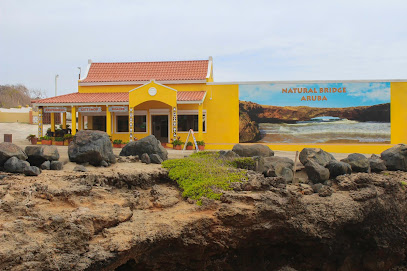
Casibari Rock Formations
Explore the stunning Casibari Rock Formations in Aruba, a geological wonder with breathtaking views and rich cultural history.

Arikok National Park
Explore the breathtaking landscapes and rich biodiversity of Arikok National Park, a natural paradise in Aruba.

Aruba Aloe Factory Museum and Store
Explore the unique heritage of aloe vera cultivation at Aruba Aloe Factory Museum and Store – a blend of history, beauty, and quality products.

Alto Vista Chapel
Discover the tranquility of Alto Vista Chapel, a historic gem in Aruba offering stunning views and a serene atmosphere for reflection and peace.

Conchi Natural Pool
Experience the breathtaking beauty of Conchi Natural Pool in Aruba, a serene escape for nature lovers and adventurers alike.

Bushiribana Ruins
Immerse yourself in Aruba's history at the Bushiribana Ruins, where stunning coastal views meet a rich gold mining heritage.

Philip's Animal Garden
Explore Philip's Animal Garden, Aruba's sanctuary for rescued wildlife, offering interactive experiences and a commitment to animal conservation.

Bushiribana Gold Smelter
Explore the historic Bushiribana Gold Smelter in Aruba - a captivating glimpse into the island's gold mining legacy and breathtaking coastal views.

Donkey Sanctuary Aruba
Experience the charm of Donkey Sanctuary Aruba, a unique wildlife refuge dedicated to rescuing and rehabilitating donkeys in a serene natural setting.

Urataka Center
Discover the culinary delights of Aruba at Urataka Center, offering authentic local flavors in a charming setting perfect for every traveler.

Huchada
Discover Huchada in Santa Cruz, Aruba - a charming bakery offering freshly baked goods and aromatic coffee in a cozy atmosphere.
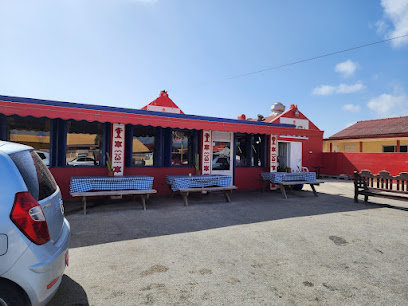
Ayo Rock Formations
Explore the breathtaking Ayo Rock Formations in Aruba, an enchanting blend of nature, history, and stunning landscapes.

Fontein Cave
Discover the ancient beauty of Fontein Cave in Aruba, where nature and history intertwine in a breathtaking limestone setting.

Unmissable attractions to see
Natural Bridge Aruba
Explore the iconic Natural Bridge in Aruba, a breathtaking geological marvel with stunning views of the Caribbean Sea and rich natural beauty.

Eagle Beach
Discover the breathtaking beauty of Eagle Beach, Aruba's premier beach destination known for its soft sands, crystal waters, and unforgettable sunset views.

Casibari Rock Formations
Explore the breathtaking Casibari Rock Formations in Aruba, a natural wonder with stunning views and rich cultural significance.

Arikok National Park
Explore the breathtaking landscapes and rich biodiversity of Arikok National Park in Aruba, a must-visit destination for nature enthusiasts and adventure seekers.

De Palm Tours Aruba
Discover the best of Aruba with De Palm Tours, offering thrilling adventures, cultural experiences, and unforgettable memories for every traveler.

De Palm Island
Discover the ultimate tropical getaway at De Palm Island, Aruba's premier all-inclusive water park and relaxation destination, perfect for families and couples.

Aruba Aloe Factory Museum and Store
Explore Aruba's rich aloe vera heritage at the Aloe Factory Museum and Store, where history meets high-quality wellness products.

The Butterfly Farm Aruba
Immerse yourself in nature's beauty at The Butterfly Farm Aruba, a serene sanctuary filled with colorful butterflies and lush gardens.

Alto Vista Chapel
Discover serenity at Alto Vista Chapel, a stunning Catholic church in Aruba offering breathtaking views and a peaceful atmosphere for all visitors.

Baby Beach
Discover the tranquility of Baby Beach in San Nicolas, Aruba, where soft sands and serene waters create a perfect island getaway.

Conchi Natural Pool
Experience the breathtaking Conchi Natural Pool in Santa Cruz, Aruba, a serene oasis surrounded by stunning landscapes and inviting waters.

Philip's Animal Garden
Experience Aruba's wildlife at Philip's Animal Garden, a sanctuary dedicated to rescued animals and conservation efforts in a tropical paradise.
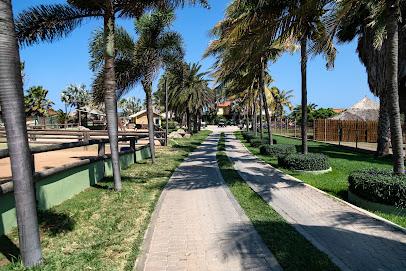
Donkey Sanctuary Aruba
Explore the beautiful Donkey Sanctuary Aruba, a haven for rescued donkeys, nestled in lush surroundings and dedicated to animal welfare.
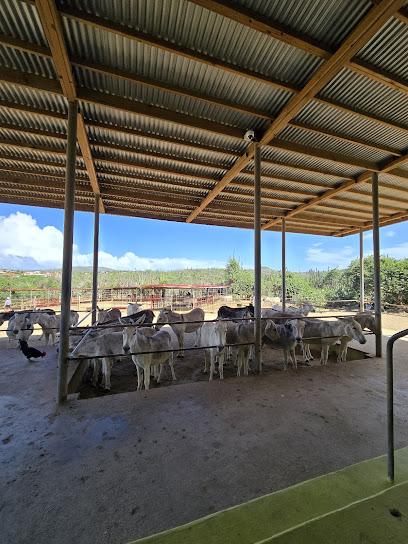
ABC Tours Aruba
Explore Aruba's breathtaking landscapes and vibrant culture with ABC Tours, your gateway to unforgettable adventures on this stunning island.

Arashi Beach
Discover the tranquil beauty of Arashi Beach in Noord, Aruba, where white sands meet turquoise waters for an unforgettable escape.

Essential places to dine
Zeerover
Experience authentic Aruban seafood at Zeerover in Savaneta – where fresh catches meet stunning sea views.
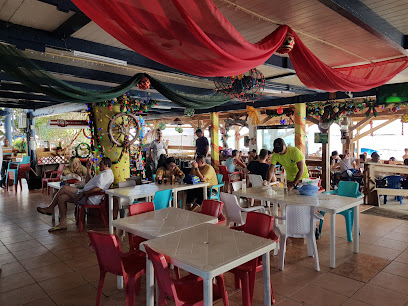
Flying Fishbone
Experience exquisite seafood and breathtaking views at Flying Fishbone in Savaneta, Aruba - where every meal is a coastal celebration.

West Deck
Discover West Deck in Oranjestad: A culinary delight offering local flavors and stunning Caribbean views in Aruba.
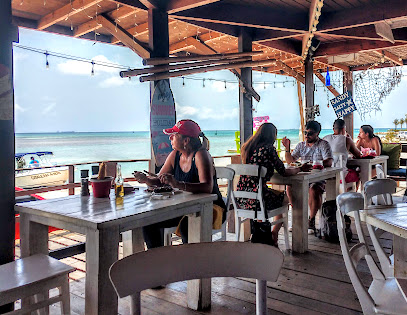
Barefoot Restaurant
Experience exquisite seafood and local flavors at Barefoot Restaurant in Aruba, where stunning ocean views meet delightful culinary creations.
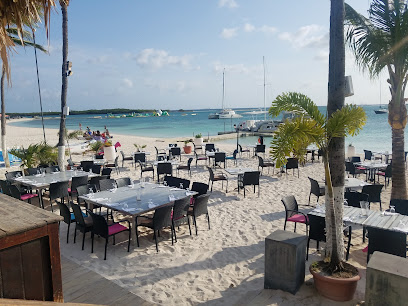
Pinchos Bar and Grill
Experience culinary bliss at Pinchos Bar and Grill, where delicious grilled dishes meet stunning Caribbean views in Oranjestad.
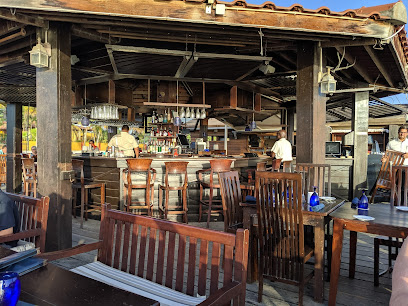
Reflexions Beach Bar & Restaurant Aruba
Experience Caribbean culinary delights at Reflexions Beach Bar & Restaurant in Aruba—where exquisite dining meets vibrant nightlife.

Urataka Center
Experience authentic Aruban flavors at Urataka Center - where delightful dishes meet affordable prices in Santa Cruz.

Taco Bell
Experience the vibrant flavors of Taco Bell in Santa Cruz, Aruba - where fast food meets island charm.

Que Pasa Restaurant & Winebar
Experience exquisite flavors at Que Pasa Restaurant & Winebar in Oranjestad - where local meets international cuisine in a cozy setting.

Gostoso Restaurant
Experience authentic Portuguese cuisine at Gostoso Restaurant in Oranjestad, Aruba – where every dish tells a story.
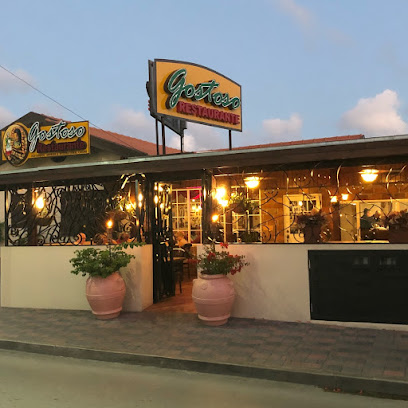
Bistro de Suikertuin
Experience delightful dining at Bistro de Suikertuin in Oranjestad - where local flavors meet contemporary cuisine in a warm and inviting atmosphere.
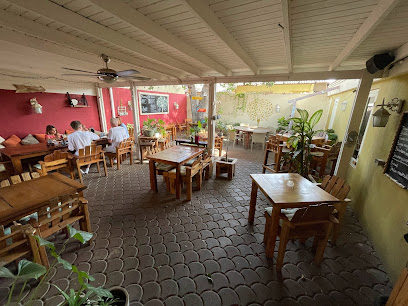
LG Smith's Steak & Chop House
Experience the finest steaks and impeccable service at LG Smith's Steak & Chop House in Oranjestad, Aruba - where every meal is a celebration.

Lima Bistro
Discover Lima Bistro in Oranjestad: A culinary haven where fresh ingredients meet Caribbean flavors for an unforgettable dining experience.

Aquarius
Experience exquisite dining at Aquarius in Aruba with breathtaking views and fresh Caribbean flavors.
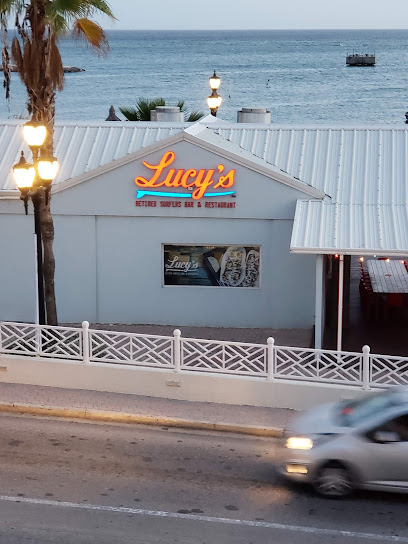
Water's Edge Restaurant & Bar
Savor exquisite cuisine and stunning ocean views at Water's Edge Restaurant & Bar in Aruba.
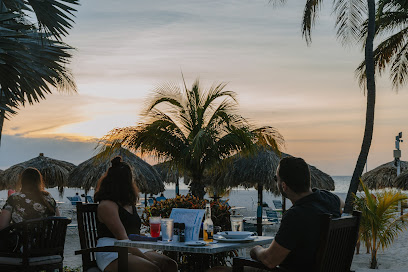
Markets, malls and hidden boutiques
Mundo Nobo Supermarket
Explore the flavors of Aruba at Mundo Nobo Supermarket, your go-to destination for local products and fresh groceries.

Super Shopping
Discover the ultimate shopping experience at Super Shopping in Oranjestad, featuring clothing, electronics, children's furniture, and much more.

Dowco
Discover the vibrant fashion scene at Dowco, Santa Cruz's premier clothing store offering unique styles and quality apparel for every occasion.

Onehappycard
Discover unique souvenirs and convenient shipping services at Onehappycard, the ultimate gift shop in Santa Cruz, Aruba for every traveler.

Fa Yang
Discover the vibrant flavors of Asia at Fa Yang, Santa Cruz's premier Chinese supermarket, offering a unique shopping experience for all tourists.

Cen's Supermarket
Discover local flavors and essentials at Cen's Supermarket in Santa Cruz, Aruba – your go-to spot for authentic island shopping.

NEW 88 Food Mart
Discover local flavors and essentials at NEW 88 Food Mart in Santa Cruz, Aruba – your one-stop supermarket for all your shopping needs.

Melz Fashion
Explore Melz Fashion in Santa Cruz, Aruba - a trendy clothing store offering stylish apparel and accessories for every taste.

Well Done Supermarket
Discover the flavors of Aruba at Well Done Supermarket, your go-to grocery store for fresh produce and local delicacies in Santa Cruz.

Hooiberg Supermarket
Explore Hooiberg Supermarket in Santa Cruz, Aruba for a diverse selection of local and international products, perfect for every traveler.

Santa Cruz Plaza
Explore the lively Santa Cruz Plaza in Aruba, where shopping meets culture and culinary delights await at every corner.
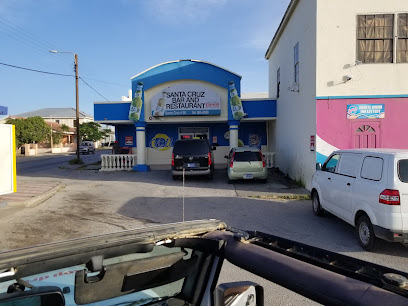
FOOD 99 Supermarket
Discover a local haven at Food 99 Supermarket in Santa Cruz, Aruba—your gateway to fresh produce, local snacks, and international flavors.

Sun & Sand
Discover a vibrant selection of beachwear, souvenirs, and unique jewelry at Sun & Sand, the premier gift shop in Oranjestad, Aruba.
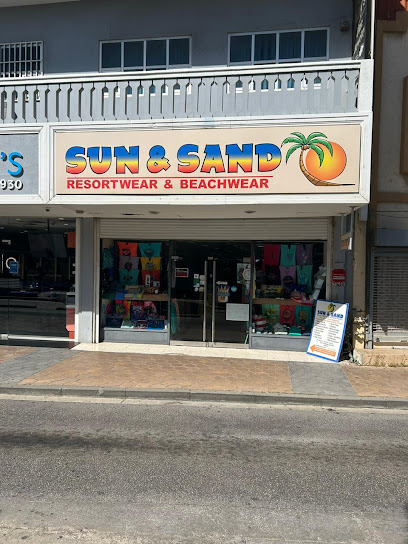
Luxury Hardware
Experience the best in tools and home improvement supplies at Luxury Hardware, Santa Cruz, Aruba - where quality meets convenience for all your DIY needs.

Angochi Supermarket
Discover local flavors and essentials at Angochi Supermarket in Santa Cruz, Aruba - your go-to destination for a delightful shopping experience.

Essential bars & hidden hideouts
Pinchos Bar and Grill
Experience the best of Caribbean cuisine at Pinchos Bar and Grill in Aruba with stunning views and a lively atmosphere.

Reflexions Beach Bar & Restaurant Aruba
Experience the vibrant atmosphere of Reflexions Beach Bar & Restaurant in Aruba, where stunning ocean views meet delicious food and lively nightlife.

Que Pasa Restaurant & Winebar
Experience the culinary delights of Aruba at Que Pasa Restaurant & Winebar, offering brunch, sushi, and a fine selection of wines in a charming setting.

Santa Cruz Bar Restaurant
Discover authentic Chinese flavors at Santa Cruz Bar Restaurant in Aruba, where great tastes meet affordable dining.
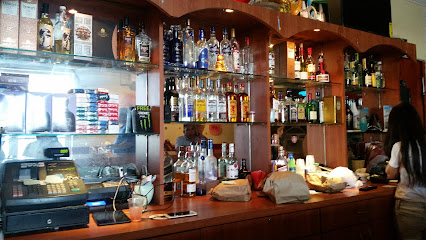
Mangel Halto Bar
Discover the laid-back charm of Mangel Halto Bar in Aruba, where tropical flavors meet stunning Caribbean views in a vibrant coastal setting.
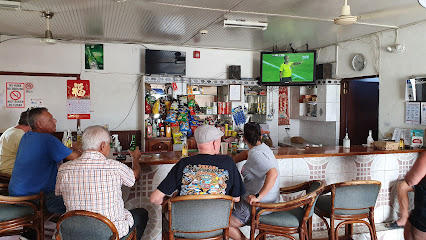
5 O clock somewhere bar
Unwind at 5 O'Clock Somewhere Bar in Aruba, where refreshing cocktails meet stunning ocean views for an unforgettable tropical experience.

Weng Kee Bar & Restaurant
Experience authentic Caribbean flavors at Weng Kee Bar & Restaurant in Santa Cruz, Aruba—where local cuisine meets vibrant atmosphere.

jumbo bar restaurant
Discover the vibrant flavors of Aruba at Jumbo Bar Restaurant, where local ingredients meet a lively atmosphere for an unforgettable dining experience.

Mido Restaurant
Discover the authentic taste of Aruba at Mido Restaurant, where delicious flavors meet a warm, inviting atmosphere.

Los Recuerdos de Ella
Experience the vibrant atmosphere and local culture at Los Recuerdos de Ella, a must-visit bar in Santa Cruz, Aruba.

La Sabana Bar & Restaurant
Discover the vibrant flavors of Aruba at La Sabana Bar & Restaurant, where local cuisine meets a warm and inviting atmosphere.

SANWELL Bar & Restaurant
Experience the lively atmosphere and delicious cuisine at SANWELL Bar & Restaurant in Santa Cruz, Aruba, where every meal is a celebration.

Unique Cocktail Lounge
Discover the vibrant atmosphere and unique cocktails at Palm Beach's premier lounge, where every sip tells a story.

Salina Local Cuisine Restaurant
Experience authentic Aruban flavors at Salina Local Cuisine Restaurant, where local ingredients meet culinary tradition for an unforgettable dining experience.
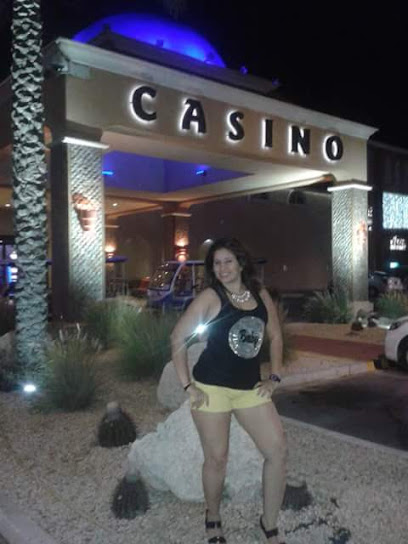
Swiss Challe Dinning
Savor authentic Swiss cuisine at Swiss Challe Dinning in Santa Cruz, Aruba – a culinary experience that combines tradition with local flavor.

Local Phrases
-
- HelloBon dia
[Bon dee-ya] - GoodbyeAyo
[Ah-yo] - YesSi
[See] - NoNo
[Noh] - Please/You're welcomePor fabor
[Por fah-bor] - Thank youDanki
[Dahn-kee] - Excuse me/SorryPardon
[Par-don] - How are you?Con ta bai?
[Kohn tah by?] - Fine. And you?Bon. I bo?
[Bon. Ee bo?] - Do you speak English?Bo ta papia Ingles?
[Boh tah pah-pee-ah Ing-gles?] - I don't understandMi no ta comprende
[Mee noh tah com-prehn-deh]
- HelloBon dia
-
- I'd like to see the menu, pleaseMi kier mira e menu, por fabor
[Mee keer mee-rah eh men-oo, por fah-bor] - I don't eat meatMi no ta come cuminda di carne
[Mee noh tah koh-meh koo-min-dah dee kar-neh] - Cheers!Salud!
[Sah-loohd] - I would like to pay, pleaseMi kier paga, por fabor
[Mee keer pah-gah, por fah-bor]
- I'd like to see the menu, pleaseMi kier mira e menu, por fabor
-
- Help!Yudami!
[Yoo-dah-mee!] - Go away!Bai for di mi!
[Bye for dee mee!] - Call the Police!Yama polis!
[Yah-mah poh-lees!] - Call a doctor!Yama un dokter!
[Yah-mah oon dok-ter!] - I'm lostMi ta perdi
[Mee tah pehr-dee] - I'm illMi ta malu
[Mee tah mah-loo]
- Help!Yudami!
-
- I'd like to buy...Mi kier cumpra...
[Mee keer koom-prah...] - I'm just lookingMi ta solamente mirando
[Mee tah soh-lah-men-teh mee-rahn-doh] - How much is it?Con ta costa esaki?
[Kohn tah koh-stah eh-sah-kee?] - That's too expensiveEsaki ta muchu caro
[Eh-sah-kee tah moo-choo kah-roh] - Can you lower the price?Bo por baha e prijs?
[Boh por bah-hah eh prees?]
- I'd like to buy...Mi kier cumpra...
-
- What time is it?Con ora e ta?
[Kohn oh-rah eh tah?] - It's one o'clockTa un ora
[Tah oon oh-rah] - Half past (10)Mitad di (10)
[Mee-tahd dee (10)] - MorningMadruga
[Mah-droo-gah] - AfternoonTardi
[Tahr-dee] - EveningAnochi
[Ah-noh-chee] - YesterdayAyera
[Ah-yeh-rah] - TodayAwe
[Ah-weh] - TomorrowMañana
[Mah-nyah-nah] - 11
[1] - 22
[2] - 33
[3] - 44
[4] - 55
[5] - 66
[6] - 77
[7] - 88
[8] - 99
[9] - 1010
[10]
- What time is it?Con ora e ta?
-
- Where's a/the...?Unda tin un/e...
[Oon-dah teen oon/eh...] - What's the address?Kiko e adres ta?
[Kee-koh eh ah-dres tah?] - Can you show me (on the map)?Bo por mustra mi (riba e mapa)?
[Boh por moos-trah mee (ree-bah eh mah-pah)?] - When's the next (bus)?Con ora ta e siguiente (bus)?
[Kohn oh-rah tah eh see-gwee-ehn-teh (boos)?] - A ticket (to ....)Un boleto (pa ....)
[Oon boh-leh-toh (pah ....)]
- Where's a/the...?Unda tin un/e...
History of Santa Cruz
-
The area now known as Santa Cruz was originally inhabited by the Arawak people, specifically the Caquetío tribe. They were skilled fishermen and farmers, living off the rich natural resources of the land and sea. Evidence of their presence can still be found in petroglyphs and archaeological sites scattered around the region.
-
In the late 15th century, Spanish explorers arrived in Aruba, but it wasn't until the early 17th century that the Dutch took control of the island. Santa Cruz served as a strategic point for Dutch settlers, helping to establish trade routes and fortifications. The Dutch influence can still be seen in the island's architecture and place names.
-
Officially founded in the 18th century, Santa Cruz became one of the key settlements in Aruba. It developed as a central hub for agriculture, particularly aloe cultivation, which was a major economic driver for the island. The town grew steadily, attracting settlers from other parts of Aruba and beyond.
-
The discovery of gold in the 19th century brought a wave of prosperity to Santa Cruz and the surrounding areas. Several gold mines were established, and Santa Cruz became a bustling center for miners and traders. The remnants of this era can still be explored through various old mining sites and museums.
-
The 20th century saw significant modernization and development in Santa Cruz. The introduction of modern infrastructure, schools, and healthcare facilities transformed the town into a more urbanized area. The establishment of the Arikok National Park in the late 20th century also contributed to the preservation of the region's natural and cultural heritage.
-
Santa Cruz is a melting pot of cultures, reflecting Aruba's diverse heritage. The town celebrates various cultural events throughout the year, including Carnival and Dera Gai, which showcase traditional music, dance, and cuisine. The blend of indigenous, African, and European influences is evident in the town's vibrant cultural landscape.
-
Today, Santa Cruz is known for its blend of historical charm and modern amenities. It serves as a gateway to the Arikok National Park, offering visitors a chance to explore Aruba's natural beauty. The town's markets, eateries, and cultural centers provide a rich tapestry of experiences for both locals and tourists.
Santa Cruz Essentials
-
Santa Cruz is located on the eastern side of Aruba. The nearest international airport is Queen Beatrix International Airport (AUA) in Oranjestad, approximately 10 kilometers away. From the airport, you can take a taxi, rent a car, or use a pre-arranged shuttle service to reach Santa Cruz. The journey typically takes around 15 minutes by car.
-
Getting around Santa Cruz is relatively easy. Renting a car is a popular option, providing the flexibility to explore at your own pace. Local taxis are also available and can be hailed or booked in advance. Public buses run by Arubus connect Santa Cruz with other parts of the island, including Oranjestad and San Nicolas. Biking is another option for those who enjoy a more active mode of transportation.
-
The official currency in Aruba is the Aruban Florin (AWG), but US Dollars (USD) are widely accepted. Credit cards are accepted in most hotels, restaurants, and shops. However, it's advisable to carry some cash for small purchases and in case you visit smaller establishments. ATMs are available in Santa Cruz, and you can withdraw both Florins and US Dollars.
-
Santa Cruz is generally safe for tourists, but it's wise to take standard precautions. Avoid walking alone at night in poorly lit areas and keep an eye on your belongings in crowded places. While Santa Cruz doesn't have specific high-crime areas targeting tourists, it's always best to stay vigilant and aware of your surroundings.
-
In case of emergency, dial 911 for immediate assistance. Santa Cruz has a local police station and medical facilities. It is recommended to have travel insurance that covers medical emergencies. For minor health issues, there are pharmacies in Santa Cruz where you can purchase over-the-counter medications.
-
Fashion: Do dress comfortably and casually. Avoid overly revealing clothing when visiting religious sites. Religion: Do respect local customs and traditions. Public Transport: Do be patient and polite when using public transport. Don't eat or drink on public buses. Greetings: Do greet people with a friendly smile and a simple 'Bon Dia' (Good Morning). Eating & Drinking: Do try local dishes and drinks. Don't refuse food or drink offered by locals, as it is considered impolite.
-
To experience Santa Cruz like a local, visit the local markets and try fresh produce and traditional Aruban foods. Engage with locals, who are often friendly and willing to share stories about the area. Don't miss the opportunity to visit Arikok National Park, which offers hiking trails, caves, and indigenous flora and fauna. Another local favorite is the Natural Pool (Conchi), a hidden gem that provides a unique swimming experience.
Trending Landmark in Santa Cruz
-
California Lighthouse
-
Natural Bridge Aruba
-
Casibari Rock Formations
-
Arikok National Park
-
Aruba Aloe Factory Museum and Store
-
Alto Vista Chapel
-
Conchi Natural Pool
-
Bushiribana Ruins
-
Philip's Animal Garden
-
Bushiribana Gold Smelter
-
Donkey Sanctuary Aruba
-
Urataka Center
-
Huchada
-
Ayo Rock Formations
-
Fontein Cave
Nearby Cities to Santa Cruz
-
Things To Do in Pos Chiquito
-
Things To Do in Savaneta
-
Things To Do in Paradera
-
Things To Do in Sero Blanco
-
Things To Do in Tanki Leendert
-
Things To Do in Oranjestad
-
Things To Do in San Nicolas
-
Things To Do in Noord
-
Things To Do in Palm Beach
-
Things To Do in Sabana Westpunt
-
Things To Do in Westpunt
-
Things To Do in Soto
-
Things To Do in Barber
-
Things To Do in Sint Michiel
-
Things To Do in Julianadorp









